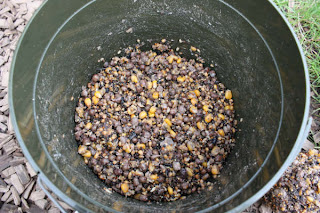The first morning dawned bright and clear with a little breeze as we headed off up the south arm to Manton bay an area we had done well on an earlier visit. With the bright conditions this meant the first couple of hours before the sun gets too high are really the best chance of any good pike fishing. Within the first hour we had a few pike following right to the side of the boat before turning away, a common occurrence on many trout waters, then a good strike to the jerk bait and a spirited fight ensues but as it come closer to the boat it turns out to be a good rainbow trout of about 5lb. Then Chris my boat partner hooks and lands a jack pike of 5-6lbs on a soft plastic lure.



The second morning is just as bright and even less wind, so we make a decision to concentrate on the zander unless the conditions change. A quick word with one of the rangers who points us in the area we should try for zander. So rigged up with one of the new prototype TFGear jig rods and a very special new braid we’re testing we head off. The breeze has now pick up a little so we set the drift upwind of the spot selected, drogue(underwater parachute to slow the boats drift) deployed to slow the boats drift and echo sounder showing we’re in 60ft of water and plenty of fish showing on the screen. Straight away we start to get takes on our vertically fished jigs and I’m soon into my first zander of the day landing it I find its hooked on the stinger treble.

A very important addition to the jig the stinger treble is attached to wire and threaded through the jig body coming out near the tail, without this you will seriously reduce your catch rate.
Quite a few more fish landed and lost then my jig is hit by something a bit bigger and the clutch squeals as line is taken, after a good fight a PB zander of about 8lb slide into the net and I’m over the moon.

We end the day with over 25 zander to our boat and Simon and Ceri have also had a cracking day landing fish up to 5lb and a bonus pike on a jig, all this and we get to watch a beautiful Rutland sunset in the bargain.











